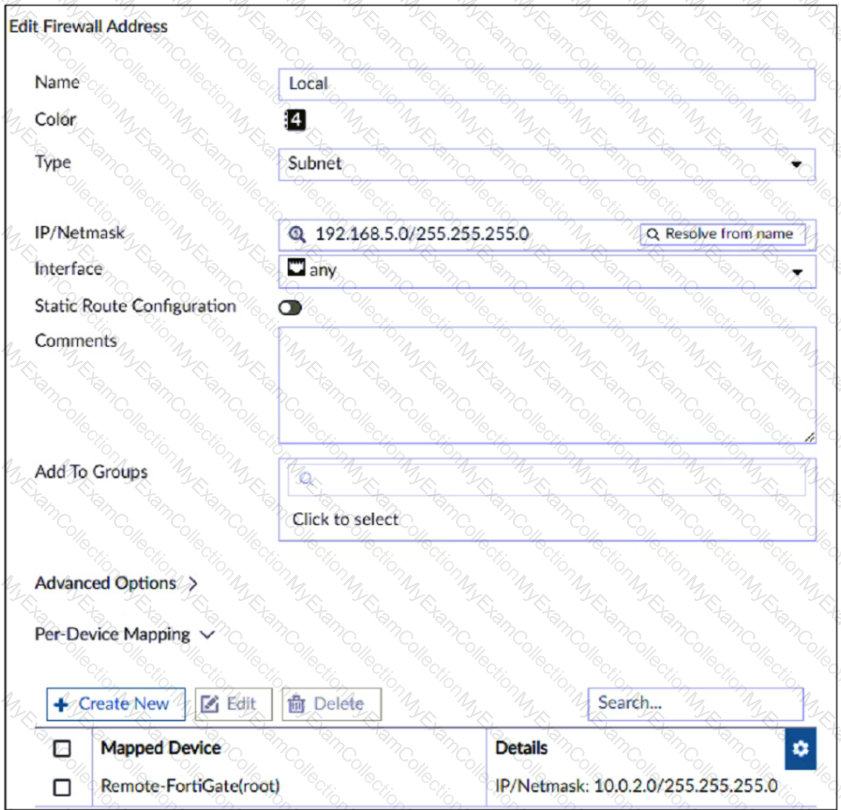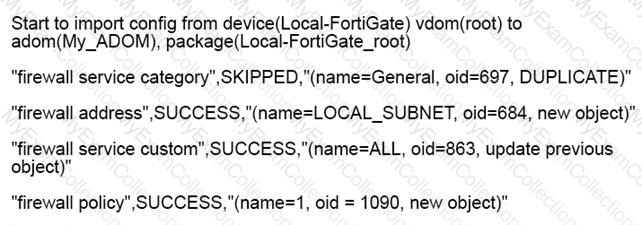Refer to the exhibit.
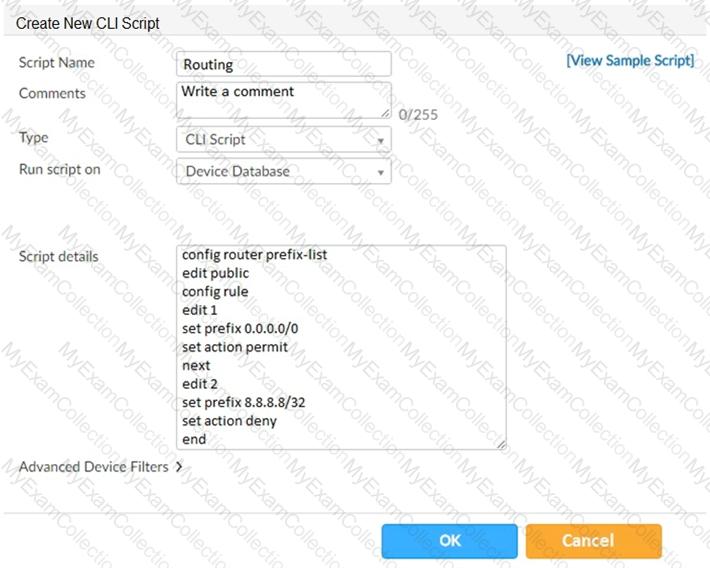
Which two statements are true if the script is executed using the Device Database option? (Choose two.)
What will be the result of reverting to a previous revision version in the revision history?
An administrator’s PC crashes before the administrator can submit a workflow session for approval. After the PC is restarted, the administrator notices that the ADOM was locked from the session before the crash.
How can the administrator unlock the ADOM?
An administrator has enabled Service Access on FortiManager.
What is the purpose of Service Access on the FortiManager interface?
Refer to the exhibit.

Given the configuration shown in the exhibit, which two statements are true? (Choose two.)
Refer to the exhibit.
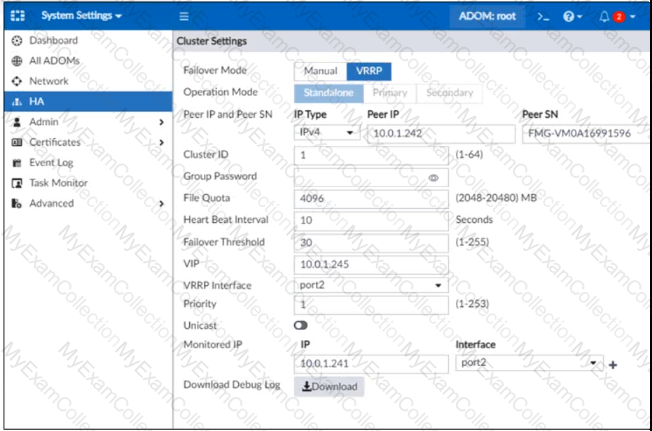
In the event that the monitored interface for the primary FortiManager device fails, which statement is true about FortiManager HA?
Which of the following statements are true regarding VPN Gateway configuration in VPN Manager? (Choose two.)
Refer to the exhibit.

How will FortiManager try to get updates for antivirus and IPS?
Which three settings are the factory default settings on FortiManager? (Choose three.)
Which two conditions trigger FortiManager to create a new revision history? (Choose two.)
An administrator would like to authorize a newly-installed AP using AP Manager. What steps does the administrator need to perform to authorize an AP?
An administrator would like to create an SD-WAN using central management. What steps does the
administrator need to perform to create an SD-WAN using central management?
An administrator has enabled Service Access on FortiManager. What is the purpose of Service Access on the FortiManager interface?
An administrator wants to delete an address object that is currently referenced in a firewall policy.
What can the administrator expect to happen?
Which configuration setting for FortiGate is part of a device-level database on FortiManager?
In addition to the default ADOMs, an administrator has created a new ADOM named Training for FortiGate devices. The administrator sent a device registration to FortiManager from a remote FortiGate. Which one of the following statements is true?
Refer to the exhibit.

Which two statements about the output are true? (Choose two.)
An administrator, Trainer, who is assigned the Super_User profile, is trying to approve a workflow session that was submitted by another administrator, Student. However, Trainer is unable to approve the workflow session.
What can prevent an admin account that has Super_User rights over the device from approving a workflow session?

Which two statements about the scheduled backup of FortiManager are true? (Choose two.)
Which three settings are the factory default settings on FortiManager? (Choose three.)
View the following exhibit.
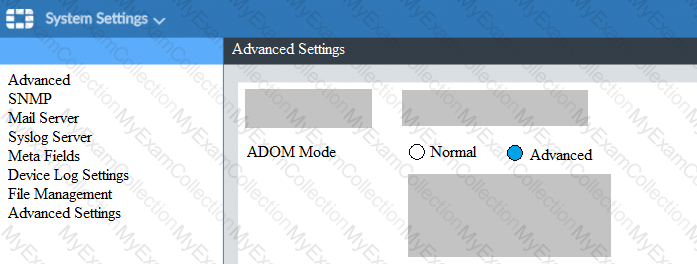
What is the purpose of setting ADOM Mode to Advanced?
View the following exhibit:
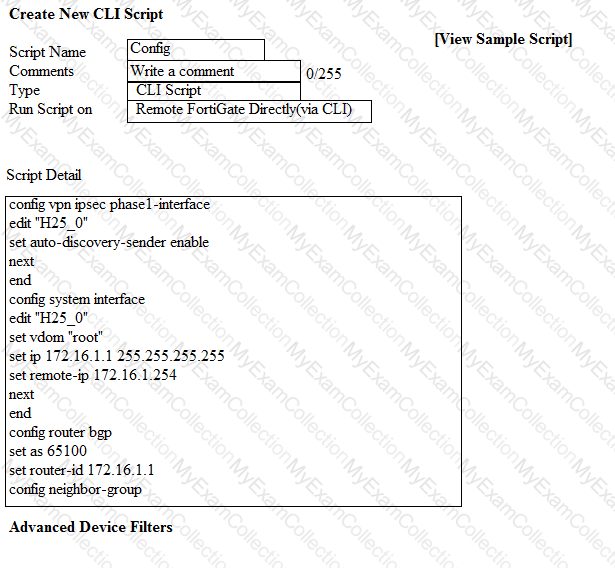
Which two statements are true if the script is executed using the Remote FortiGate Directly (via CLI) option? (Choose two.)
Refer to the exhibit.
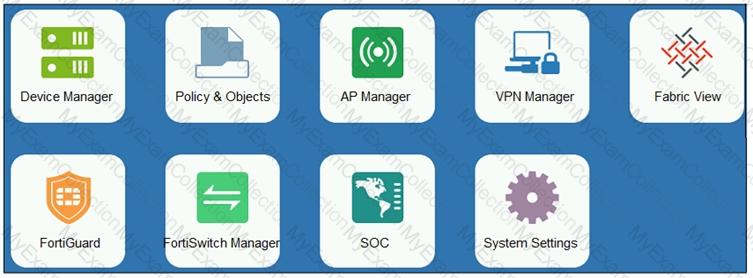
An administrator logs into the FortiManager GUI and sees the panes shown in the exhibit.
Which two reasons can explain why the FortiAnalyzer feature panes do not appear? (Choose two.)
